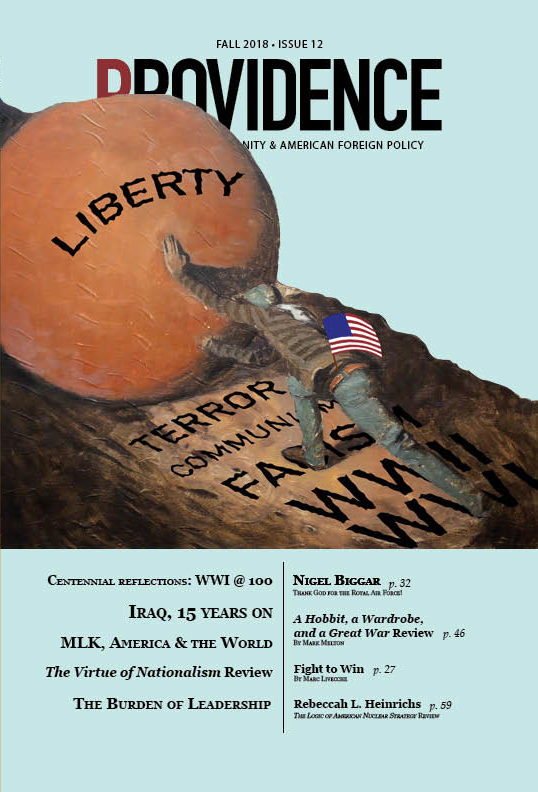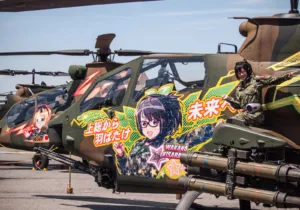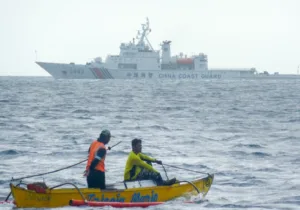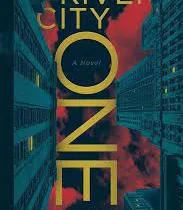Mark Bowden’s Hue 1968: A Turning Point of the American War in Vietnam is a book about an epic tragedy. As a Vietnam veteran myself, I found Bowden’s book a humbling read. My combat experiences were of the engage-and-pile-on variety, not the protracted up-close-and-personal savagery that the Marines and First Cavalry soldiers experienced and Bowden documents in his excellent narrative. For someone who has “been there,” reading what transpired in the Battle of Hue is extremely sobering and, in places, deeply dispiriting.
For readers burdened with military responsibilities, Bowden’s narrative is a cautionary tale warning about tragic mistakes of the past. His story describes a 24-day fight to the death between relatively evenly matched military adversaries. The fight is reprised through the eyes of combatants who pulled the triggers, experienced the terror of close quarters combat, and suffered lasting wounds of tragic pain and loss.
As Bowden’s book title suggests, the Battle of Hue represents a grand mal convulsion injected into the larger history of the Vietnam War. The battle communicated to Hanoi that a military victory over the South was not possible so long as the United States remained committed to the Saigon government. In the other direction, the Tet Offensive, of which the battle was a part, served to convince America that the Vietnam conflict was not resolvable in Saigon’s favor within the domestic and geopolitical parameters that policymakers had established for America’s involvement in the conflict.
Readers who yearn for Bowden to weigh in on the quotidian debate about whether the South could have ultimately won the Vietnam conflict will be disappointed. Bowden provides the context for the Vietnam War, but only in a minimalist format. While reporting the facts associated with the larger impact of Tet on American voters and policymakers, he does not speculate about what might have transpired had military leaders and various administrations made different policy choices.
Prelude to Paroxysm
Effective intelligence is about gathering dots, connecting them, and then piecing together what the information portends regarding enemy capabilities and intentions. Had the US detected Hanoi’s Tet agenda before the fact, there is little doubt that the tragedy could have been avoided. As it happened, the offensive turned out to be a catastrophe of epic proportions for both Saigon and Hanoi.
In Bowden’s telling, such an outcome was born of what can only be described as an enormous gamble for Hanoi and a pervasive, sustained intelligence failure on the part of America and its partners. The result was that Viet Cong (VC) and People’s Army of Vietnam (NVA) forces successfully infiltrated 36 provincial capitals without detection only to be slaughtered during determined, messy, and effective counterattacks. After the smoke cleared, tens of thousands of dead littered streets all over South Vietnam, and the earnest assurances made by the American government that the Vietnam conflict would soon take a favorable turn for Saigon were left smoldering ruin.
The North made such a daring and unexpected invasion in order to trigger a popular uprising amongst the South Vietnamese, or at least the officials claimed. But the strategy was always a pipedream since large numbers of the Vietnamese living in the South had fled the North’s oppression. The idea they would revolt and return to this mistreatment was absurdly fanciful, and the former NVA leaders that Bowden interviewed for this book recognized the folly before the offensive began. According to the book, those leaders instead hoped the Tet Offensive would cause political damage and create the perception that the South could not win, which they were certainly right about.
The commander of US forces in South Vietnam during the Tet Offensive was General William Westmoreland. “Westy” convinced himself that the NVA would push forces south in 1968 for a spring offensive that would focus on the Marine firebase at Khe Sanh in the Central Highlands west of Hue. Westy confidently assured President Lyndon Johnson that Khe Sanh was the prize where Ho Chi Minh and NVA General Vo Nguyen Giap hoped to conduct a replay of their success over the French 14 years earlier at Dien Bien Phu. In the meantime, Westmoreland foolishly touted body count figures as the appropriate measure of who was winning and who was losing in Vietnam.
In the fall of 1967, units allied with the US detected a significant increase in NVA resupply traffic coming down from the north along the Ho Chi Minh Trail. Inside South Vietnam, allied patrols also stumbled across significant caches of NVA weaponry stored for future deployment. As it related to Hue and shortly before Tet, an Australian officer serving as an advisor to an Army of the Republic of Vietnam (ARVN) recon platoon southwest of Hue reported seeing hundreds of NVA regulars in pith helmets and crisp new uniforms stealthily making their way toward Hue City. Despite that and other reports, no general alarm was sounded as Tet approached.
Westmoreland was passionately committed to making sure the North would not overrun Khe Sanh. In fact, Bowden notes that military planners on Okinawa even proposed with Westmoreland’s approval “Operation Fractured Jaw,” which incredibly contemplated the deployment of tactical nuclear weapons to guarantee that Khe Sanh would not be lost. When policymakers discovered the initiative, they promptly squelched and forcefully buried it. Prompted by Westy’s Khe Sanh obsession, all intelligence flowing into the US military’s headquarters in Saigon in the runup to Tet came to be interpreted through the prism of the Khe Sanh fixation. The US simply did not seriously consider other plausible scenarios regarding North Vietnamese intentions.
Across South Vietnam, there was a total failure to detect the enemy’s building strength and audacious intentions. For instance, in a feat of masterful military discipline and operational security, four battalions of NVA regulars and two battalions of veteran VC fighters, a combined force of about 2,500 troops, successfully infiltrated Hue. A short distance northwest of the city, an additional regiment of NVA regulars secretly came to occupy the tiny village of La Chu as a tactical command center, and as a force sufficient to repulse any allied counterattack from the north. The stage was set for the coming nightmare that was the Battle of Hue.
The Hue Firestorm Erupts
As depicted in helpful maps set out at the beginning of each of four parts in Bowden’s book, the City of Hue is divided into two sectors bifurcated by the Huong River, which flows west to east out to the South China Sea. The Truong Tien Bridge connected Hue’s two sectors.
The southern portion of the city, which came to be known as “the Triangle,” housed the US joint service command’s compound, a prison, soccer stadium, and hospital complex. The northern section of Hue featured the Citadel, an ancient and venerated Vietnamese fortress surrounded by thick imposing walls with homes, gardens, various government buildings, and the royal palace. Hue was occupied by an assortment of US Army, Marine Corps, and ARVN units distributed in various compounds throughout the city.
The VC and NVA crept into the city under the allies’ noses and stealthily created a myriad of fighting positions and strong points with intersecting fields of fire. Two battalions of NVA and assorted VC occupied the Triangle, and two NVA battalions and various VC components moved into the Citadel.
When the balloon went up in the early hours of Wednesday, January 31, the Saigon forces were stunned. With numerous personnel given leave during the traditional Tet “ceasefire,” all concerned were caught on the back foot.
Besieged troops immediately made urgent calls for reinforcements to the Marine Corps’ headquarters in Phu Bai, which is 11 kilometers south of Hue. In the north, lead units of the First Air Cavalry Division were alerted to move into a blocking position north and west of Hue.
The Marine Corps command authority in Phu Bai greeted the urgent calls from Hue with skepticism. Based on allied intelligence, the reports simply did not seem plausible. Surely the alarm was born of panic and exaggeration, rather than accurate and sober assessment. Leaders simply did not believe that the VC and NVA could deploy a large number of troops inside Hue without detection.
As a result, units initially dribbled forward from Phu Bai, and the Marine reinforcements left their packs, which were smartly arranged in strict military formation and awaiting their owners’ return. They assumed they would be back in short order after the tactical annoyance in Hue had been firmly and decisively dealt with. Given the actual realities prevailing in Hue, Bowden’s description of Phu Bai’s utter incapacity to understand the cataclysm is frustrating and painful to read.
Over the succeeding four weeks, the maelstrom in Hue was a house-by-house, building-by-building, street-by-street, block-by-block slugfest with the contenders fighting furiously and murderously and adjusting tactics to their enemy’s new strategies. Little by little, intrepid yet terrified young Marines doggedly took back first the Triangle and then the Citadel. The destruction and bloodletting along the way were primordial and indeed soul killing in dimension and impact. With countless civilians embedded within the contending forces, the slaughter of innocents was profound and essentially unavoidable.
The chaos of urban warfare inevitably produced capricious killing. In Hue, the inherent depravity of the communist ideology which animated the Tet Offensive brought about a convulsion of wanton and often arbitrary slaughter. The political cadre embedded with the NVA forces unfurled lists of people to be identified, hunted down, and exterminated. Immediately after the launch of the attack in Hue, the political cleansing began with purpose.
Bowden’s detailed and extensive interviews of combatants on both sides, as well as the survivors from Hue’s civilian population, confirmed that Hanoi’s often youthful and untrained political commissars carried out their assignments with cold and sometimes arbitrary ruthlessness. In so doing, they proved yet again that, when poisonous ideology waters the tree of war, mass murder is always the fruit.
The general mayhem that characterized the contest in Hue leads Bowden to conclude that the precise number of political murders by the North is impossible to determine. Nevertheless, he leaves no doubt that it reached into the thousands. Throughout the battle, both sides fashioned mass graves. Into those graves they dumped the broken and bloated bodies of the dead.
After the battle ended on February 24, numerous mass graves were found where the corpses had been thrown carelessly and intermingled in service of expediency. Even readers hardened by their own combat experiences will likely find this part of Bowden’s narrative dispiriting.
Big Trouble North of Hue—The FirstAir Cavalry Division
Expecting Hanoi to focus on Khe Sanh in the approaching spring, in January Westmoreland repositioned the Army’s formidable First Air Cavalry Division from II Corps to I Corps and to the north and west of Hue. As Tet approached, the First Cavalry was in a highly vulnerable transition.
Only days before Tet, lead elements of the First Cavalry began arriving at Camp Evans, eleven kilometers north of Hue, and Fire Base PK-17, about five kilometers south of Evans along Highway 1. Such repositioning placed the division east of Khe Sanh and made them ready to launch where and when needed. Unfortunately, such elements arrived piecemeal. Lead elements came without their full complement of Hueys, gunships, artillery, and vital support material like fuel and ammunition.
Shortly after the fight in Hue erupted, one battalion of the First Cavalry promptly deployed south by helicopter from Camp Evans to PK-17, and then south by foot again toward the north wall of the Citadel. Such movement was undertaken so hastily that the division’s vaunted “pathfinders” were not put forward to scout the line of march to assess threats to the front. Suddenly, just north of the village of La Chu, the battalion found itself confronting a reinforced regiment of NVA regulars dug in and waiting for them.
The NVA troops were a blocking force protecting the north and west flank of VC-NVA initiative already in process in Hue. Unbeknownst to the First Cavalry, La Chu was also the command center for the entire VC-NVA operation in Hue. To make matters worse, because the terrain offered open fields of fire and little cover, the US soldiers became pinned down in a hail of withering fire from a hornet’s nest of NVA trench lines and bunkers.
The battalion commander of the First Cavalry battalion apprised the brigade commander of the situation and assured his boss that moving forward without adequate artillery and air support was ill-advised. By this time, February 3, the brigade commander was under intense pressure from the division commander to get the Army into the Hue fight. As a result, the brigade commander ordered the battalion commander in no uncertain terms that he was to attack immediately, ending the communication with an emphatic, “Warmaster out!”
Because the cavalry soldiers had been launched under circumstances where they were ill-supported by their own artillery and air assets, their situation quickly became desperate. Over the next three days, the NVA bloodied the Army soldiers badly and then flanked them to the west, leaving them essentially surrounded. The American soldiers fought off attack after attack, still unable to move, and taking more casualties by the hour. With half the battalion killed or wounded, the only option for the severely mauled battalion was a breakout.
On the third night, February 5, under total darkness and almost miraculously, the battalion sneaked through a gap in the NVA lines to the relative safety of the western mountains’ foothills. Since the NVA knew where the US soldiers were and that they would likely try to mount an escape, such a maneuver was just as commendable as the NVA infiltration into Hue. After the cavalry soldiers escaped, they called in an all-out barrage by reinforced cavalry artillery and US Navy gunfire from the destroyer USS McCormick off the coast onto their previous position now occupied again by NVA.
Over the next two weeks, the First Cavalry repeatedly assaulted the village of La Chu and surrounding hamlets. On each occasion, they sustained further significant losses and ended up pinned down again and again. When the NVA command authority ordered the evacuation of Hue, the NVA command center ended up decamping and fading away to the southwest as the battle in Hue City came to an end. It was further established that the First Cavalry had been facing as many as four thousand NVA regulars guarding their Hue command center. ARVN-US intelligence later identified some of the NVA units involved as being part of the NVA contingent supposedly arrayed around Khe Sanh.
By battle’s end, Army elements had failed to close off the NVA escape routes to the west through the southwest corner of the Citadel when the NVA command authority ordered the city evacuated. Between February 20 and 23, the remaining shattered NVA forces slipped out of Hue and escaped to the relative safety of their sanctuaries in the western mountains. Their command center blocking force faded away with them. And, with that, the Battle of Hue and the Tet Offensive ended.
For America, Tet and Hue constituted an inflexion point which caused a fundamental recalibration of America’s Vietnam policy. While Saigon had forcefully thwarted the Tet Offensive, the strategic calculus of events had shifted decisively in favor of Hanoi.
Bowden Has Delivered
Walker Percy famously observed that bad books lie. Good books are good because they tell the truth. By that standard, Bowden has produced a commendable work. In fact, Bowden’s book undoubtedly makes an important contribution to the historical canon of the Vietnam War.
In straightforward terms, Bowden describes the horrors of war through the eyes of those who fought the battles. His work is carefully researched, well organized, and smoothly written. Undoubtedly, some will disagree with some of Bowden’s conclusions. I suspect a few will be able to fairly contend that his judgments have not been made in good faith.
Combat veterans will encounter parts of Bowden’s narrative that are emotionally difficult, especially the parts that mention shameful behavior by Americans soldiers. Without making excuses for it, such conduct can fairly be attributed to the morally corrosive and dehumanizing dynamics of war itself.
In 1741, the great colonial evangelist Jonathan Edwards delivered his sermon entitled “Sinners in the Hands of an Angry God.” In that opus, Edwards describes in graphic terms the terror of souls in agony being dangled over the bottomless, fiery pit of hell. All those caught up in the Battle of Hue surely can identify with the horrors Edward’s sermon so graphically portrays.
Thomas E. Wilson graduated from Georgetown University (BA ’64, JD ’67) and Columbia University (MBA ’70). Mr. Wilson served in Vietnam with the Fifth Special Forces Group (Airborne) (1968-69), Deputy Commander A-502 (Trung Dung) (1969).







 Sponsor a student for Christianity & National Security 2024
Sponsor a student for Christianity & National Security 2024